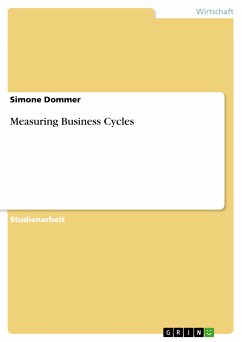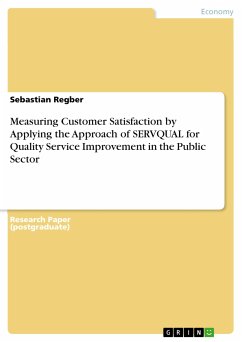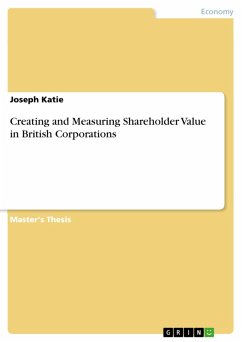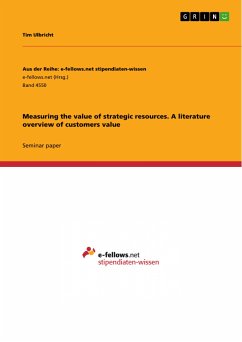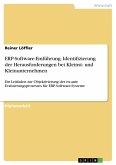Studienarbeit aus dem Jahr 2009 im Fachbereich BWL - Unternehmensforschung, Operations Research, , Sprache: Deutsch, Abstract: This assignment covers the topic "Measuring Business Cycles". A business cycle is defined as recurrent but not period fluctuations in business econom-ics. It includes four different phases: contraction (decrease of business activi-ties), trough (lower turning point), expansion or recovery (increase of busi-ness activities) and peak (upper turning point followed again by contraction). One business cycle can either last from trough to next trough or from one peak to another. Business cycles present fluctuations around a given growth-trend. According to the impulse-propagation approaching fluctuations are caused by three types of shocks: supply shock, private demand shock and policy shock. Short-time shifts in aggregate supply and aggregate demand have an impact on output, employment and price level as these factors are closely intercon-nected. Therefore economists use variables to track output, employment and price level in order to find out the current business cycle phase and to select the correct instruments or if necessary to start the counteractive measure-ments. The most important factor in determining the phase of the business cycle is the economic activity measured by gross domestic product (GDP), a procyc-lical variable. A positive GDP indicates that the economy is growing (expan-sion phase) and vice versa a negative GDP shows the economy is declining (contraction phase). Potential GDP shows the possible output under full em-ployment. The harmonisation of potential and real GDP can be influenced by decreasing the unemployment rate (share of unemployed people of labor force. Unemployment rate develops counter cyclically. In case economic ac-tivity increases (expansion phase), unemployment rate will fall and vice versa. Another important factor is inflation. High inflation devaluates value of money and rising inflation will increase the demand for higher wages leading to lower output. The objective of macroeconomic policy is to track the variables and to find the correct respond to each development. Possible instruments may be fo-cussing on stability in employment, prices and growth.
Dieser Download kann aus rechtlichen Gründen nur mit Rechnungsadresse in A, B, BG, CY, CZ, D, DK, EW, E, FIN, F, GR, HR, H, IRL, I, LT, L, LR, M, NL, PL, P, R, S, SLO, SK ausgeliefert werden.

